As I mentioned in last week’s post about stairwell reentry, I am working with the BHMA Codes and Government Affairs Committee to submit code change proposals relative to doors and hardware. As we create our proposals and review proposals submitted by others, I may reach out to you for your insight. Sometimes looking inside of my head may be a bit scary, but we could really use your help! Here is another question for you…
In the Olden Days, the code used in a fairly large chunk of the US (1993 BOCA National Building Code) required panic hardware on “all doors equipped with latching devices in occupancies in Use Groups A and E or portions of buildings occupied for assembly or educational purposes and serving rooms or spaces with an occupant load greater than 100.” (key phrase – latching devices)
At the time, I had several projects where the architects did not want panic hardware on their assembly spaces, either due to aesthetics or the noise associated with actuating the crossbar/touchpad or the latching. Because doors with electromagnetic locks do not latch, my interpretation was that we could use mag-locks instead of panics on those doors. The doors were typically unlocked while the space was occupied, but even if they were locked they would be released by a motion sensor, the emergency push button, the fire alarm, and power failure as required by the Access-Controlled Egress Doors section.
Then one day I ran into an AHJ who disagreed with this interpretation, and soon after the code was changed to something similar to what it currently states: “Doors serving a Group H occupancy and doors serving rooms or spaces with an occupant load of 50 or more in a Group A or E occupancy shall not be provided with a latch or lock unless it is panic hardware or fire exit hardware.” Note: The occupant load was 100 or more prior to the 2006 International Building Code, and is still 100 or more per NFPA 101.
This week I am at the CONSTRUCT show in Baltimore, and I noticed that all of the meeting rooms have mag-locks and no panic hardware. The building was built prior to the IBC, so I’m guessing the hardware consultant or architect was interpreting the code the same way I did – if the doors LATCH, they need panic hardware. They don’t LATCH, so they don’t need panic hardware. There are some photos of these doors below (I’m not a fan of the push plates and pulls, but nobody asked me).
In a recent discussion about code change proposals, there was a question about whether electromagnetic locks should be an acceptable alternative to panic hardware on doors serving Assembly occupancies – essentially the application shown in the photos below (and on these doors in San Antonio). If submitted and approved, a door serving an Assembly occupancy, and perhaps even Educational occupancies depending on how the proposal was written, could have mag-locks released by a sensor, and no panic hardware – no latching device at all.
What are your thoughts on this? Do mag-locks with motion sensors meet the life safety needs for these spaces? Or should panic hardware continue to be required?
You need to login or register to bookmark/favorite this content.

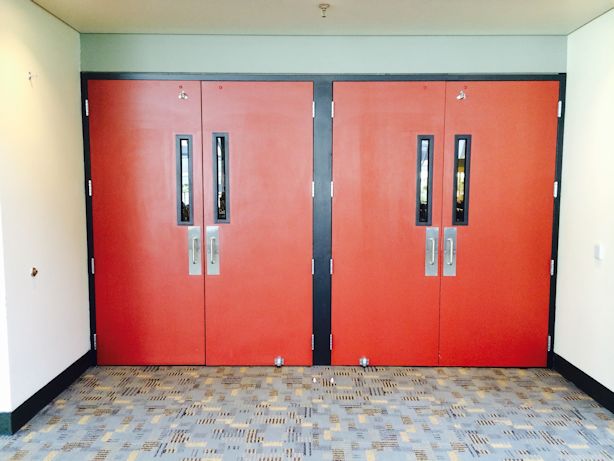
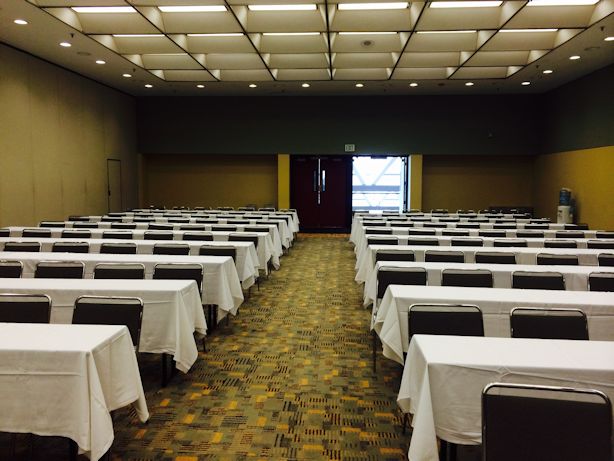
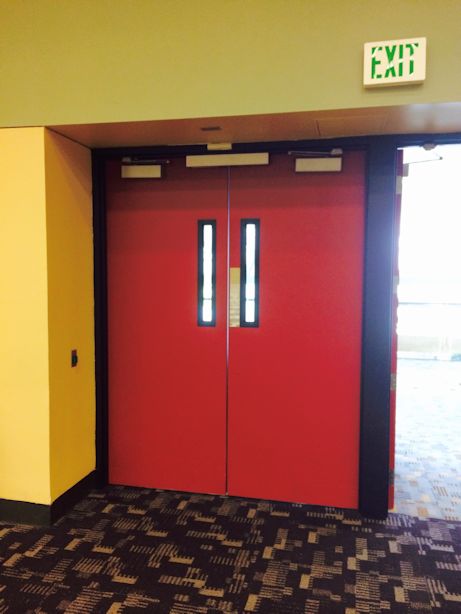
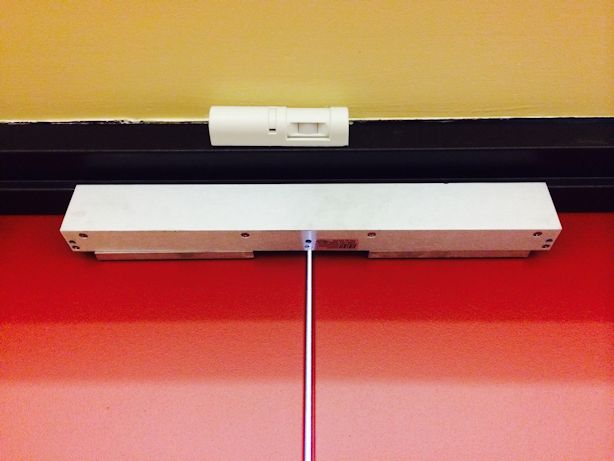
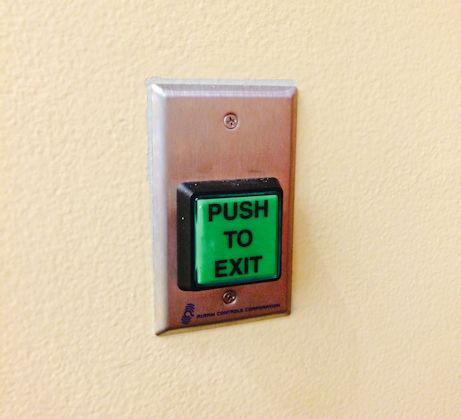
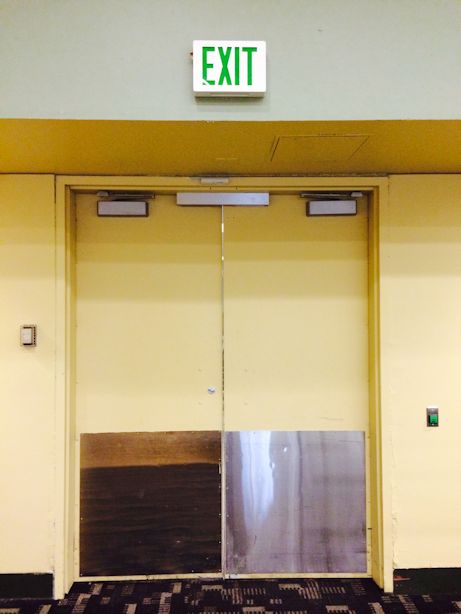
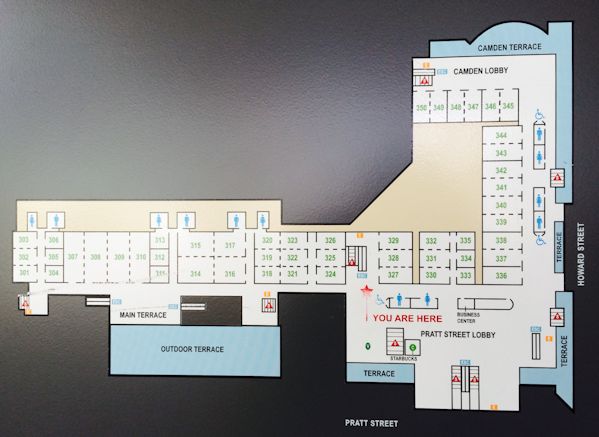




Here in Arizona at this university, we don’t allow mag locks unless they have a hard wired switch device on the door. It could be a VonDuprin push bar with switch, Securitron sensor bar or whatever. But the door must have an obvious device to release the door. The button on the wall is still used in some applications, but in addition to the “exit device” like bar. The obvious problem is security. We are going away from mag locks altogether due to the battery back up issue to keep spaces secure. The best alternative I can suggest is a VD99 with QEL retraction which pulls the bar in and is quiet when unlocked.
The application of none latching hardware & electromagnetic locks within the path of egress for areas of assembly would not be allowed by the Authority Having Jurisdiction within the South Texas Market. The question of whether this application is a “good application”, in my option is easily answered, “NO”. There is more than one concern and/or issue we should consider when dealing with door in the path of egress (Life Safety, Fire, Security, functionality, ease of operation & maintenance). If we as consultants specify such applications, I would recommend increasing your liability insurance.
Lori: My opinion is to keep panic devices at “A” and “E” Occupant types.
I was at a facility that had a very busy entry door. They kept the doors locked for security. The problem was with so much traffic the unlock/relock couldn’t cycle fast enogh and people got jammed up at the doors. We ended up replacing magnets with electric latch retraction panics.
Using magnets at a school, in my opinion, is also a security risk.
Curious people peek out and inadvertantly get in the range of the motion sensor and unlock the door. You have now allowed a perpetrator into the building!
the “no lock or latch…unless it is panic (or fire exit) hardware” was intended to protect the building occupants. Activation of panic hardware has always been by an obvious method – an activator that extends at least 1/2 of the door width and oriented towards the latch edge of the door and is mounted at a familiar height (within a prescribed range) in order to provide reasonable assurance that it is operable in an emergency by virtually all users within the occupancy type. all of the events that could constitute an emergency are met by this mechanical means.
Further, the security of the opening, i.e. keeping the door locked from ingress where required is also met unless the user deliberately “un-latches” the door by pressing the exit device actuator. The same can not be said for electromagnetic locks that have to be released by either “presence detection” or pressing a wall mounted switch.
I don’t think the use of magnetic locks should be used in this application because of the inherent requirement that the doors “automatically” release when someone simply approaches the door in order to look through the vision lite or a viewer prior to opening the door. I recognize that the egress requirements would be met, but we also need to provide some ingress protection as well in a lot of circumstances.
My first question would be, Are the mag locks fail-safe or fail-secure? This may be a dumb question since they are electro magnets but I’m not very familiar with them.
Otherwise, I can’t imagine why these would be non-compliant. They allow free egress when the room is occupied and unlocked. If the power fails and they default to unlocked, free egress remains.
Security is not a concern of the code but rather of the facility. So latching is not relevant unless the doors are rated.
Am I missing something?
This is not a dumb question: While the lock itself is fail safe (i.e. must have power to be locked), the release circuit may not. So if power drops the the motion detector or other push button or exit device switch and not the mag lock, you could have a lock in situation. the biggest mistake I see in mag locks is SYSTEM DESIGN. In fact i have seen more bad design than correct design with respect to magnetic locks. The most common mistake is using the request-to-exit input by itself to control the lock power. Panel goes down and you have the above described lock-in. Another problem which I identified many years ago to one major mag lock manufacturer was that their capacitance-type touch bar would fail at a different voltage than the mag lock. Particularly problematic during periods when battery power was running the lock during a power outage: the power would drop from 24 to say 12 v as the batteries declined. The relay in the bar would have just enough voltage to keep the release relay energized, but the touch sensor would fail. The mag lock would still be holding, although at half the force (in this case 600 lbs or so). This was apparently not foreseen by the manufacture because most of their sales (at least at the time) did not include back up power during AC failure and they had not heard of the problem until I informed them. They claim (and i believe them) that this problem was fixed immediately, but i am still gun shy about using a bar with this technology. If I did, I would tweak the voltage down until the touch sensor no longer works. The lock should have unlocked before this time.
I don’t like the elimination of the mechanical latch.
Assuming that the magnetic holder does release when it is supposed to, what if the fire is in the passageway on the other side of the door? Not much to hold the door closed (latched in place) in order to protect the room occupants while they seek out other exits.
Well I never quite agree with Architects and their idea of aesthetics since their idea of being pretty could lead to my demise. Frankly I always like the look of hardware. I also like the look of exposed rods?
So put my vote in for having mechanical hardware.
I never specify mag locks unless I’m building people or material air locks on labs & isolation rooms. Too much room on exterior egress, assembly rooms doors with mags for installation errors especially in rule areas in the US. Mechanical egress is bullet proof less chance of installation errors. I’ve stayed in hotels the prox scanner was not working the bypass switch was momentary no timer so I needed 8′ long arm to hold the button down and push the door open. If the doors had exit devices this would not be an issue. One hotel I reported it to the manager next trip opening was not fixed. So it made me responsible had I not reported it to a state fire marshal. Don’t change the code.
Over this side of the pond, Maglocks are ubiquitous, in spite of non code-compliance. For my money, they guarantee release with a break-glass call pint backed up with a fire-alarm relay. Cheap and effective. Only downside is a power outage over a weekend which gives rise to security concerns.
Do mag-locks with motion sensors meet the life safety needs for these spaces?
YES, when the opening is not in the building fire zone.
Or should panic hardware continue to be required?
YES, because it gives visual indication that the opening is a free Exit, besides of course the usual advantages of the Exit Device
Does it provide security?
NO
Concluding that the code should change to require an Exit Device on these spaces, as it provides safety & security not matched with Mag Lock. Thus obliterating any ambiguities for the AHJ.
I do think that the code should be flexibility enough to allow Owners to manage their own risk as long as there is no life safety issue involved. (safe exiting should be pretty much guaranteed with fire alarm override, fail safe on power loss, emergency door button at door etc)
Potentially there may not be any security risk if the egress doors are only exiting to a secured zone or protected interior corridors.
For building perimeter applications, I do recommend adding mechanical latching devices for security and smoke/fire control- to cater for unexpected/non-intentional deactivations or lock misalingments/malfunctions.
“shall not be equipped with a lock or latch unless it is panic hardware…”
Magnetic locks are not panic hardware. In fact they’re the antithesis of panic hardware.
If you’re considering using magnetic locks in any occupancy other than detention or special use (like laboratories with interlocks), DON’T. There are hundreds of other configurations that allow free egress and an adequate level of security. Magnetic locks should be an absolute last resort. Not all emergencies involve the fire alarm or power loss (an active shooter comes to mind). Regardless of what IBC or the AHJ says, we are entrusted with life safety, and obligated to do it correctly and minimize the possibility of loss of life.
[…] https://idighardware.com/2014/09/assembly-doors-with-mag-locks/ […]
What would you do in this scenario? We have a community room that has a pair of doors for egress. The double doors lead to a cooridor of offices. They want to restrict people from going into the office area and want a card reader on that set of doors that would impede free egress. There is also an exterior exit in the room with an occupancy of over 50 people.
Hi Todd –
If the community room is an assembly occupancy, and the door to the office area is a required means of egress from the assembly space, your options are limited. If the adopted code is based on NFPA 101, the Life Safety Code would allow delayed egress locks on doors serving assembly occupancies, other than the main entrance door. But the IBC and IFC do not allow delayed egress locks on assembly spaces, except courtrooms. For these codes you would be limited to an exit alarm and signage, unless the AHJ approves something else.
– Lori